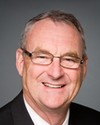My experience is really informed by my own lived experience and the great honour that I have working with first nations children and families and the communities that serve them.
If I can humbly suggest, Canada funds some programs that it rolls out nationally, but the one thing it does not fund is perhaps the thing it needs to do the most, and that is to fund first nations and aboriginal communities to dream.
In my work I've done some analysis of this question of what's available on reserve and off reserve. The voluntary sector accounts for $115 billion in social supports to Canadians. In a research report we did in 2003, we could only find six individual instances in which a child on reserve had received any services.
As we have already seen, aboriginal children on reserve are less likely to receive any provincial services, they are underfunded by the federal government in child welfare by $109 million, and there are very few municipal equivalents.
Many of you who have been on reserves will find few examples of a library being open--other than one that is attached to the school--or of facilities where children with disabilities and their families have access to everything. From a family income point of view, Campaign 2000 said the family income for a person off reserve is about $37,000, compared to about $9,000 for a person on reserve.
I say that if we applied the same conditions to every other Canadian that we do to status Indian children, we would have many thousands of children in child welfare care.
What we need to do is fund first nations to do what CIDA already does internationally--develop sustainable community development plans that put children and young people at the centre, and then fund those services to make those dreams happen adequately. That is my view about what needs to happen.
Government does not need to find the solutions; they need to recognize that many of the communities already have their solutions. They just need to get behind them and celebrate them.





